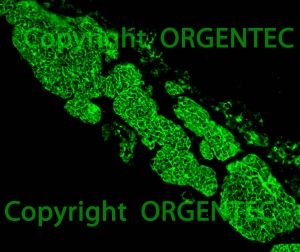In 2012 the European Society of Paediatric Gastroenterology, Hepatology and Nutrition (ESPGHAN) has issued diagnostic guidelines for coeliac disease (CD) that should support physicians in accurately diagnosing CD without performing duodenal biopsies in selected patients. These guidelines have now been updated, new clinical evidence for this approach has been implemented and the non-biopsy approach has been evaluated also in asymptomatic children.
Category: gastroenterology diagnostics
articles on diagnosing autoimmune disorders such as celiac disease, primary biliary cirrhosis, Morbus Crohn, Colitis ulcerosa …
Biomarkers for disease activity in Crohn’s disease
May measuring of fecal calprotectin replace colonoscopy for follow up of patients with Crohn’s disease after surgery?
After intestinal resection patients with Crohn’s disease need close monitoring and tailored therapy adjustment to reduce the risk of relapses. Today, colonoscopy is still the gold standard for the detection of disease reactivation, an invasive procedure which is unpleasant for the patient and expensive for the health care systems.
Biomarkers in blood or stool samples that correlate with endoscopic findings could therefor improve the surveillance of patients with inflammatory bowel diseases.
A candidate marker for this purpose is measurement of calprotectin concentrations in stool samples from affected patients.
Calprotectin for discriminiation of functional and organic bowel disease
 Differential diagnosis of bowel diseases can be challenging, because most of them present with similar common symptoms: abdominal pain and discomfort, diarrhea, weight loss. Infections by common gastrointestinal pathogens may soon be identified, but discrimination of inflammatory bowel disease, of which ulcerative colitis and Crohn’s disease are the most common, and irritable bowel syndrome, remains difficult.
Differential diagnosis of bowel diseases can be challenging, because most of them present with similar common symptoms: abdominal pain and discomfort, diarrhea, weight loss. Infections by common gastrointestinal pathogens may soon be identified, but discrimination of inflammatory bowel disease, of which ulcerative colitis and Crohn’s disease are the most common, and irritable bowel syndrome, remains difficult.
Inflammatory bowel disease (IBD) is characterised by inflammation of the bowel, which is not seen in most patients with irritable bowel syndrome (IBS), and both conditions request different diagnostic and therapeutic approaches. IBD are serious diseases with severe comorbidities, and affected patients need further investigation with extensive diagnostic measures and intensive medical treatment. In contrast to that, IBS may be painful and impairs quality of life, but it does not usually cause serious morbidity. However, patients with IBS can have symptoms for many years and they often experience unnecessary and stressing diagnostic procedures.
New Guidelines for the Diagnosis of Celiac Disease
Celiac disease diagnostics revised
The diagnostic criteria for celiac disease (CD) have remained unchanged for more than 20 years, after the 1990 revision of the guidelines originally formulated in 1969. During this period the disease has been intensively studied and scientific findings have unveiled the genetic background of celiac disease, linked to the human leukocyte antigen (HLA)-DQ2 and HLA-DQ8 haplotypes. The key autoantigen tissue transglutaminase (tTG) has been identified and reliable laboratory tests for disease specific autoantibodies now contribute to diagnostics and complement the methodological repertoire of clinical observations and histologic findings in duodenal biopsy samples. Finally, the European Society for Paediatric Gastroenterology, Hepatology, and Nutrition (ESPGHAN) has now published New Guidelines for the Diagnosis of Celiac Disease.
Liver Disease Diagnostics: Antibody-based Diagnosis of Autoimmune Liver Diseases
Liver Disease Diagnostics: Antibody-Based Diagnosis of Autoimmune Liver Disease
For the launch of our Liver-9-Line immunoblot test (to our press release “Liver Disease Diagnostics by Immunoblot” of May 16, 2011), I dug through a pile of literature on the topic of autoantibody-based diagnosis of autoimmune diseases of the liver. In the last week I picked it all up again and worked through it systematically.
The reason for my renewed interest is that we brought four more ELISA tests for liver diagnostics to the market two weeks ago. They are the Anti-LKM-1, Anti-SLA, Anti-gp210, and Anti-Sp100 tests, all designed for fully automated autoimmune diagnosis with our Alegria system. All four test systems assist the formulation of a diagnosis when autoimmune hepatitis (AIH) and primary biliary cirrhosis (PBC) are suspected, or for differential diagnosis when another disorder of the liver is assumed. (more…)




